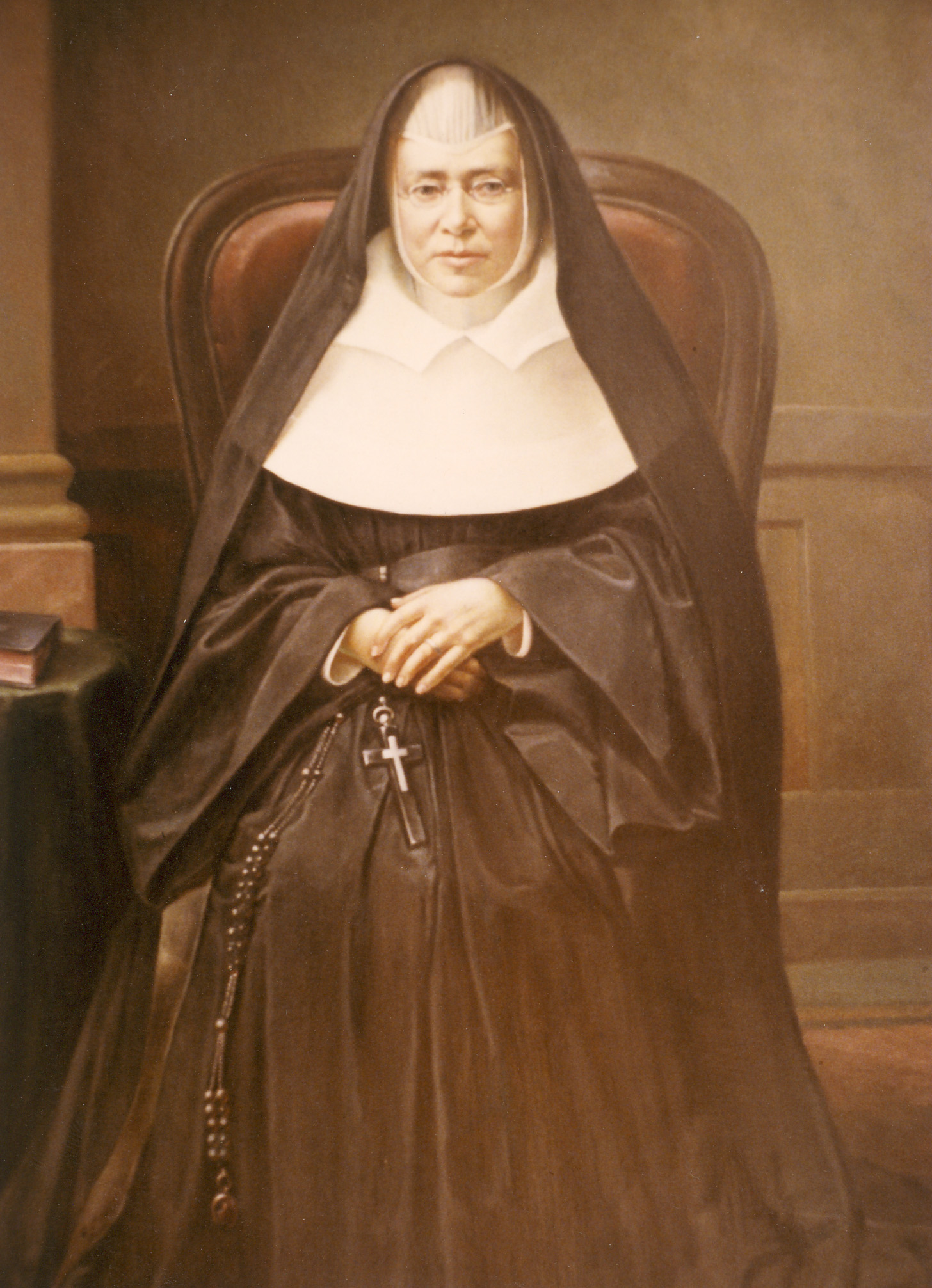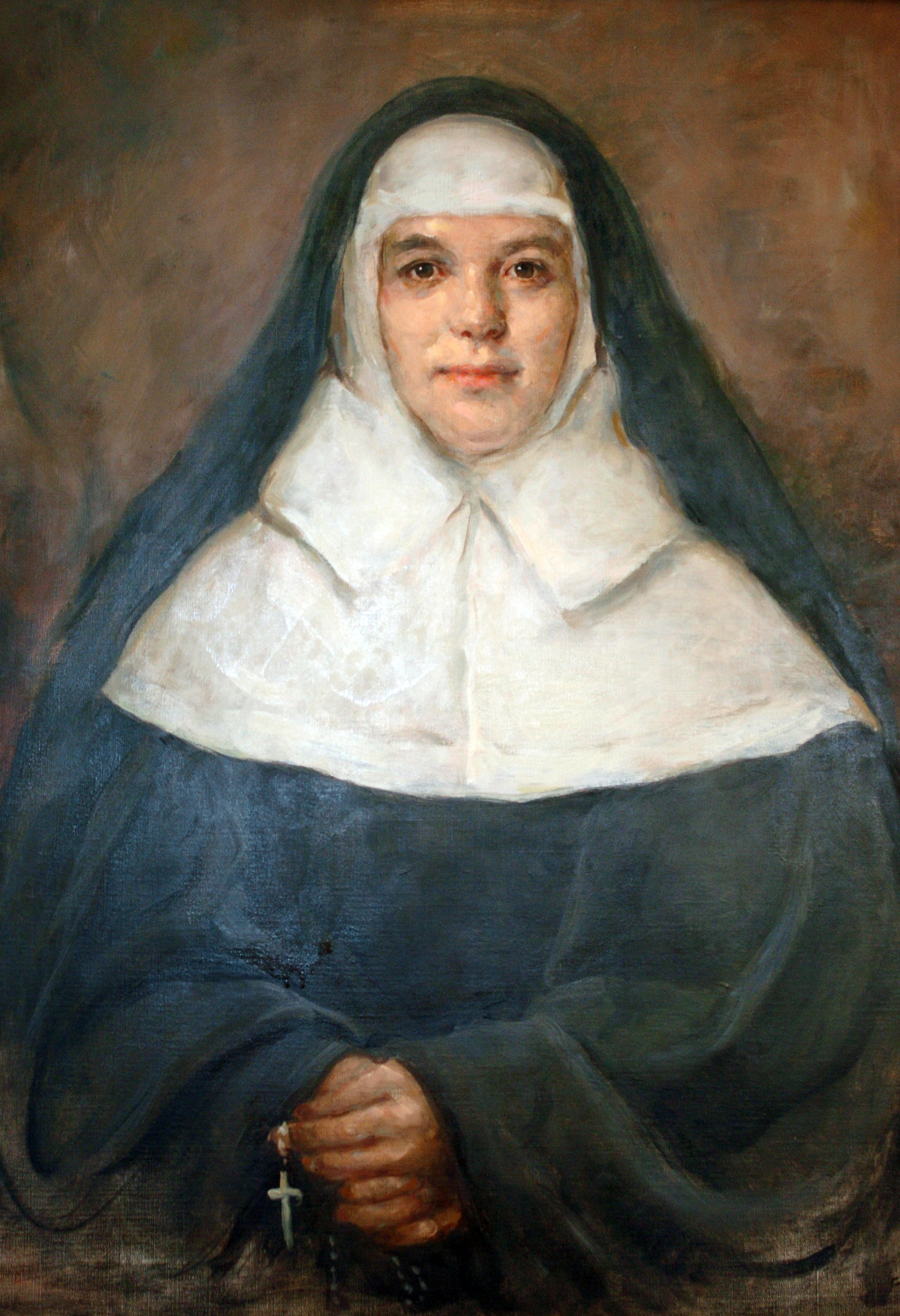By Sister Sheila Carney
They came at the time of the winter solstice when earth was beginning to turn again to the light; on the day when the “O Antiphons” of Advent bid us pray: “O Rising Sun, splendor of Eternal Light and brilliant Sun of Justice, come and light up the darkness concealing from us the path of life.”
They crossed the Atlantic on the Queen of the West, travelled from New York to Philadelphia to Chambersburg by train, and then by coach across the Alleghenies to the city of Pittsburgh. They came in the dark and cold of winter to be a presence of peace and a witness to the light of God’s love. 175 years ago today, the Thanksgiving holiday was being celebrated in Pittsburgh. We gather now to give thanks once again for them and for all Mercy women who have carried on their legacy of service.
They were seven in number, “the picking choice of the Carlow community,” and Frances Warde was their leader. She was 33 years of age and had already founded convents of Mercy, schools and orphanages in Carlow, Naas, Wexford and Westport.
Fearing that their habits might not withstand the salt and spray, Frances and her companions embarked for their ocean journey wearing secular clothes. Black cashmere dresses were the chosen costume and, while six of the sisters wore white net caps trimmed with white ribbons, Frances chose a cap of black lace with ribbons of lavender. This is more than a fashion note—it is indeed revelatory of an individuality, a liberty of spirit, an adaptability to new conditions which was characteristic of this woman we honor as the founder of the Sisters of Mercy in the United States. She carried with her, as the foundation upon which the community would be established in this country, Catherine’s zeal for service to the poor, the sick and the uneducated, and a particular concern for women.
Mother Frances Warde

How can we best summarize her enormous energy, creativity and zeal for mission? During her time in Pittsburgh, Saint Mary’s Academy, St. Paul’s Orphanage, St. Paul’s Cathedral School, Mercy Hospital, Saint Xavier’s Academy and Saint Vincent School were founded. In 1966, the year the city of Pittsburgh celebrated its bicentennial, the Western Pennsylvania Historical Society named her one of the ten most influential women in the history of the city. She went on from here to found “personally perhaps more convents, schools, hospitals and institutions of social welfare than any other religious leader of the Western world” (Kathleen Healy), and Austin Carroll recorded in her Leaves from the Annals of the Sisters of Mercy that “it is probable that no woman has lived to whom the Church in the United States owes more than it does to her.”
She loved gardens and music, was unsurpassed as a conversationalist, had a sharp sense of the ridiculous, a contagious laugh and a manner described as “queenly”. Her passion was for the poor and her special gift was for the religious education of adults. The hope that inspired this personality, this service, is her legacy to us.
Sister Josephine Cullen
Like Frances Warde, Josephine Cullen had a particular aptitude for the religious instruction of adults and a zeal for the visitation of the sick. She is described as a cultured woman with a pleasing expression, a genial manner, and great administrative ability which she demonstrated in an amazing variety of ways—as second superior of the Pittsburgh community, as first superior and directress at Saint Xavier’s Academy, as administrator at Mercy Hospital where she also served as admissions officer, bookkeeper and supervisor of the dispensary—all within the space of nine years. She had so endeared herself to the people of this city that, at her death in 1852, a bell was cast in her honor which rings now outside this chapel. Its peal reminds us that we are called to Josephine’s hope.
The Strange Sisters
Aloysia Strange was a first-year novice when she arrived in Pittsburgh with her sister Elizabeth and was the first to be professed in the United States. Noted for her teaching and organizational abilities, she assisted Josephine Cullen in the administration as St. Xavier’s and served on the faculty there. Aloysia’s hope for a fruitful and faithful ministry in the United States is our same hope.
At the time of her death, Bishop Canevin said of Elizabeth Strange: “Sister Elizabeth gave 57 years of spotless religious life and high Christian energy to the people—to the poor, the forlorn, forsaken, suffering or broken-hearted people who turned to her in their distress or sorrow. Our memory of her is that of a refined, tender-hearted Christian woman of graceful attainments and unassuming simplicity.”
Elizabeth served as Mother Assistant of the community for three years, opened a school in Hollidaysburg, spent a year in Buffalo helping a fledgling community there become established, and taught for many years at Saint Xavier’s Academy. She was an accomplished letter writer and faithful correspondent, she translated spiritual books from French to English, wrote articles for the Pittsburgh Catholic and illuminated community manuscripts. Her bright and sensitive disposition were signs of her hope.
Sister Veronica McDarby
For forty years Veronica McDarby opened the door to the needy. Poor persons who called at the convent for relief were the special recipients of her care, as were the young girls who were employed to assist her. To these children, we are told, she gave a mother’s care, instructing them in piety while she trained them in habits of industry. Her Irish charm and her kindly manner gave joy to all who pulled the convent bell.
Veronica was the only one of the seven who did not volunteer for the American mission. The hope which enabled her to accept what she experienced as a difficult obedience is the same hope to which we are called.
Sister Philomena Reid
Philomena Reid lived only two years after responding to the call to the Pittsburgh mission and these things are noted of her – that she had a special concern for women and that she taught continual music lessons. Among the sisters she was loved for her charitable and obliging disposition and emulated for her conformity to the will of God. Philomena’s simplicity and trust were the undergirding of her hope.
Mother Agatha O’Brien

She came to Pittsburgh as Margaret O’Brien, a 21 year old postulant. Two months later, she became the first Mercy woman in the United States to be clothed in the habit and received Agatha as her name in religion. She is described as a woman of remarkable judgment, quick apprehension and piety, with a keen business sense, an appreciation for property values and a direct and straightforward manner in appealing for monies for whatever was needed.
Agatha entered the community as a lay sisters but Bishop O’Connor declared her a woman “capable of ruling a nation” and suggested that she be professed as a choir sister so that the community could benefit fully from her numerous talents. She professed her vows in May 1846 and in September of the same year became the first superior of the Sisters of Mercy in Chicago. Agatha carried the hope of new life from Carlow to Pittsburgh and on to Chicago, and we are called to her same hope.
Called To The Same Hope and Mercy
They came at the time of the winter solstice when earth was beginning to turn again to the light; on the day when the “O Antiphons” of Advent bid us pray that the Sun of Justice will enlighten our world. They came with a new bishop to a new local church in a new country to find here and to reveal here the mercy of God. They came in hope and we were called to one and the same hope when we were called.